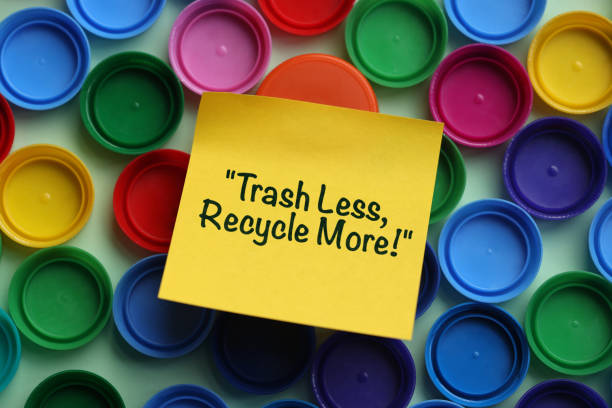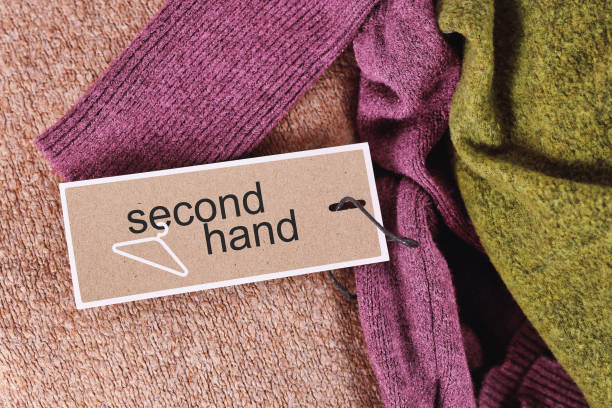Over the past couple of weeks, the Marie Claire Nigeria team has highlighted, in this fashion issue, the essence of moving beyond conversations to taking action for the future of sustainable fashion from production to consumption.
The fundamental concept of sustainability is ensuring that our actions do not compromise nature’s ability to provide for future generations. It encompasses ethical, social, and environmental goals, and it’s a goal we must collectively embrace for it to function effectively. To make this engaging, I will delve into sustainable practices from both a consumer’s and producer’s perspective.

A producer’s perspective on the future of sustainable fashion
As producers, we must diligently research and implement eco-friendly materials in our production processes. At Hertunba, we take this commitment seriously, utilising 90% recycled and upcycled materials from fabrics to our biodegradable packaging. Sustainability isn’t just a part of who we are; it’s our identity. I firmly believe that embracing sustainability as your core identity keeps you accountable and leaves no room for anything but improvement.
I encourage fashion producers to embrace producing less. Overproduction is a significant reason our industry remains unsustainable, leading to the staggering 11.3 million tons of textile waste in landfills each year, with a substantial portion ending up in Africa. Producing in small batches, operating on a made-to-order system, and curbing overproduction is how Hertunba caters to our clientele’s needs personally.
Producers can enhance manufacturing efficiency through various methods, including:
- Streamlining operations to minimise waste.
- Cutting down on energy consumption.
- Managing water usage efficiently.
- Implementing lean production techniques and advanced technologies for improved efficiency.
- Sourcing materials locally to reduce emissions associated with transportation.”
At Hertunba, we’re committed to waste reduction. Our designs and patterns are crafted to encourage upcycling, transforming waste into meaningful pieces, such as our ‘Coat of Many Colors’ and ‘Achebe Tunic.’ Additionally, all our materials are locally sourced, supporting sustainability in our communities.

The consumer’s perspective on the future of sustainable fashion
In all honesty, producers cannot achieve a sustainable future on their own; they need the support and intentionality of consumers. As consumers, we must make sustainability our identity and shop responsibly. By buying less and developing a personal style, we are encouraged to invest in a few quality items we genuinely love and commit to caring for without needing to follow trends or resort to fast fashion.
Embrace a more sustainable fashion ethos – Reuse, reduce, and up-cycle. The culture of constantly seeking a new look for every occasion has a negative environmental impact. Let’s cherish the art of reusing our clothing multiple times, showcasing quality and personal pride.
Up-cycling offers a creative twist, breathing new life into items you wish to refresh, resulting in one-of-a-kind, eye-catching pieces of clothing—a true testament to forward-thinking fashion.
When something’s damaged, mend it. Each tear tells a story, and there’s beauty in hand-stitching a rip or reattaching a button. This practice is not only eco-friendly but also therapeutic, connecting us with our clothes on a deeper level.

The future of sustainable fashion in Africa
Africa stands out when it comes to embracing sustainability, with deep-rooted traditions of recycling, from used bottles to clothes. Thrifting is a way of life, with massive markets dedicated to second-hand items. The culture of passing down clothes from older siblings to younger ones is another aspect of sustainable fashion ingrained in Nigerian society. However, it’s crucial to emphasise that Africa alone cannot handle the world’s excesses. We must do better on a global scale, discouraging the turning of Africa into a dumping ground for textile waste.
Due to the structure of demand in the African fashion scene, many small African fashion brands producing locally are sustainable (some unconsciously). As an African designer myself, I tend to wear a lot more African/Nigerian designers in my daily life, mainly because they get my needs and style culture, and as someone who only wears a pair of jeans and a T-shirt maybe twice a year, this makes sense.
Florentina’s brand recommendations
Allow me to introduce you to a selection of sustainable African brands I adore, known for crafting locally produced, stylish, and distinct pieces. Brands such as Nkwo, Awa Meite, Kilentar, Eki Kere, Vanhuvamwe, Maliko Studios, This is Us, Mimi Plange, Maxhosa, and Hertunba are all shining examples of the remarkable creativity and dedication found within African fashion, offering unique and sustainable fashion choices that celebrate local craftsmanship and culture.
I encourage the rest of the world to learn from us, both from a consumer’s standpoint and a production approach, and to cultivate a culture of recycling and artisanal production for a sustainable future.
In unwavering commitment to a sustainable future,
Florentina Agu
Founder, Hertunba


